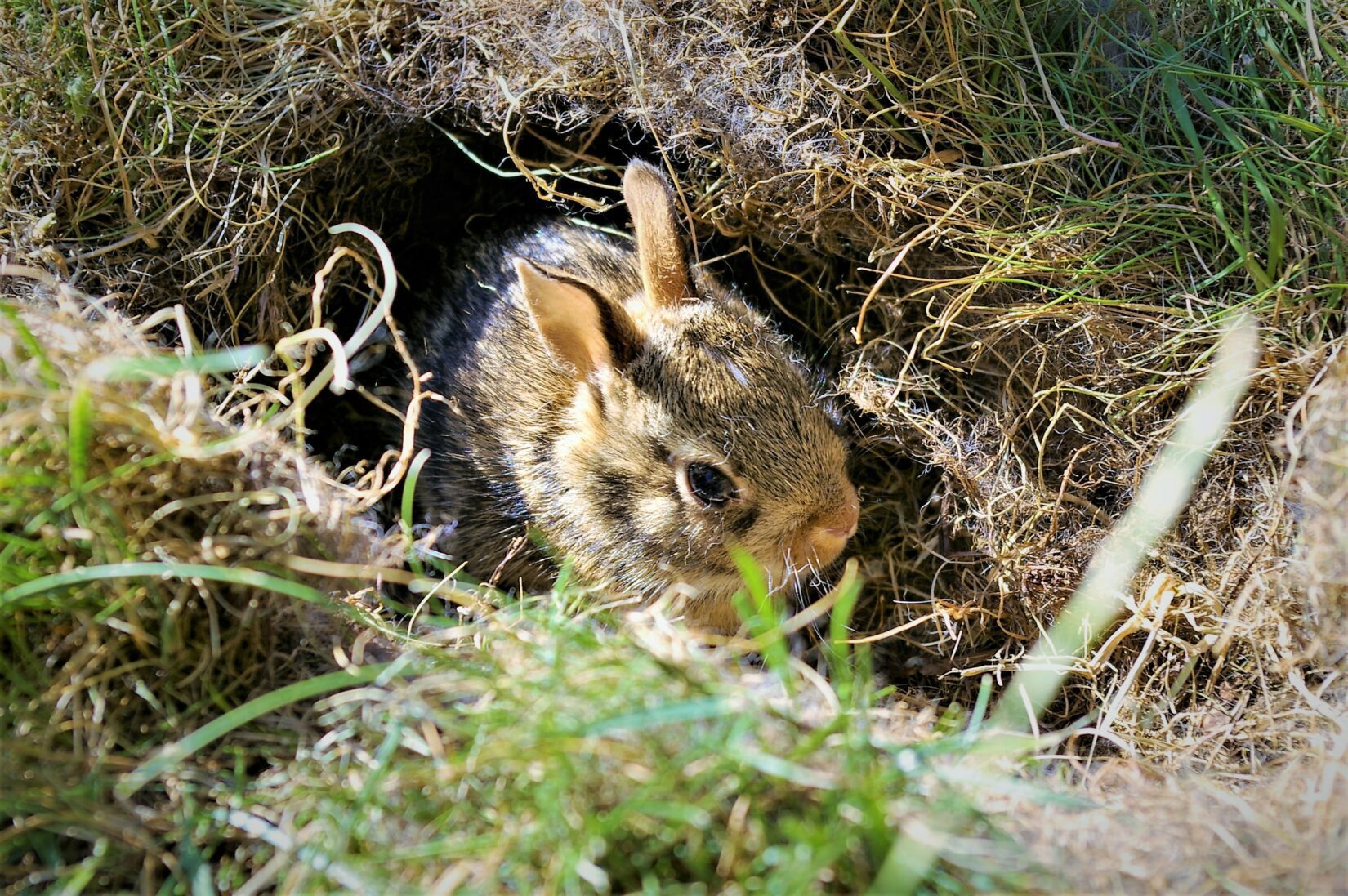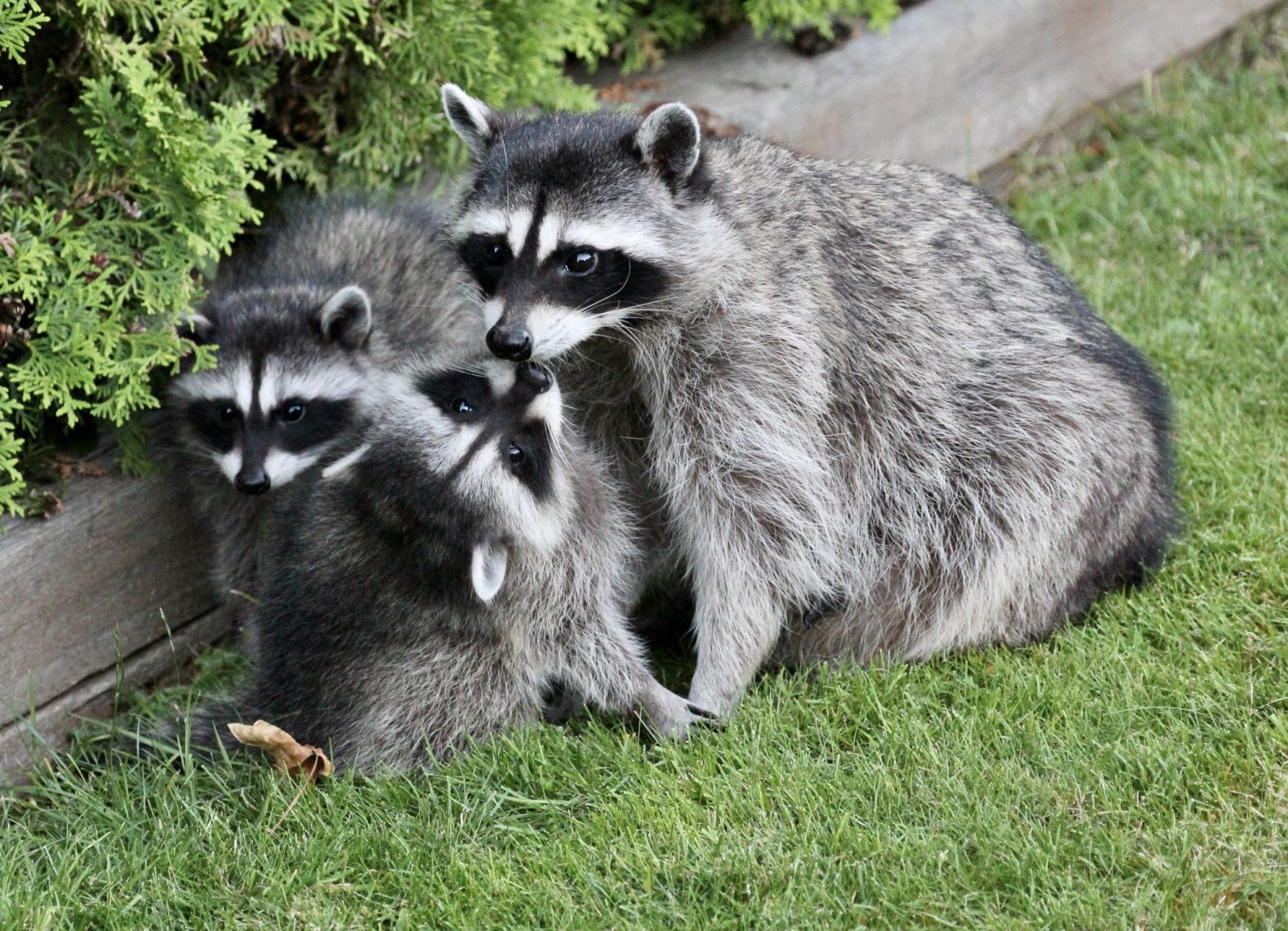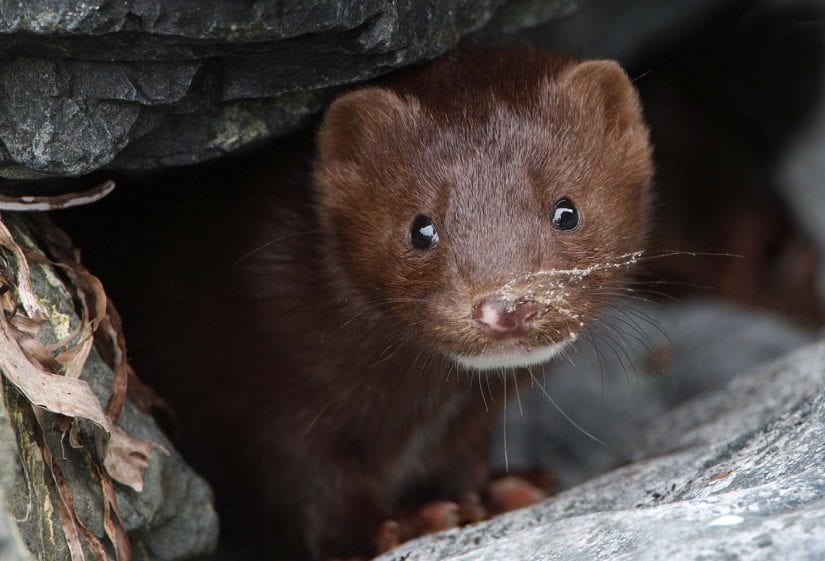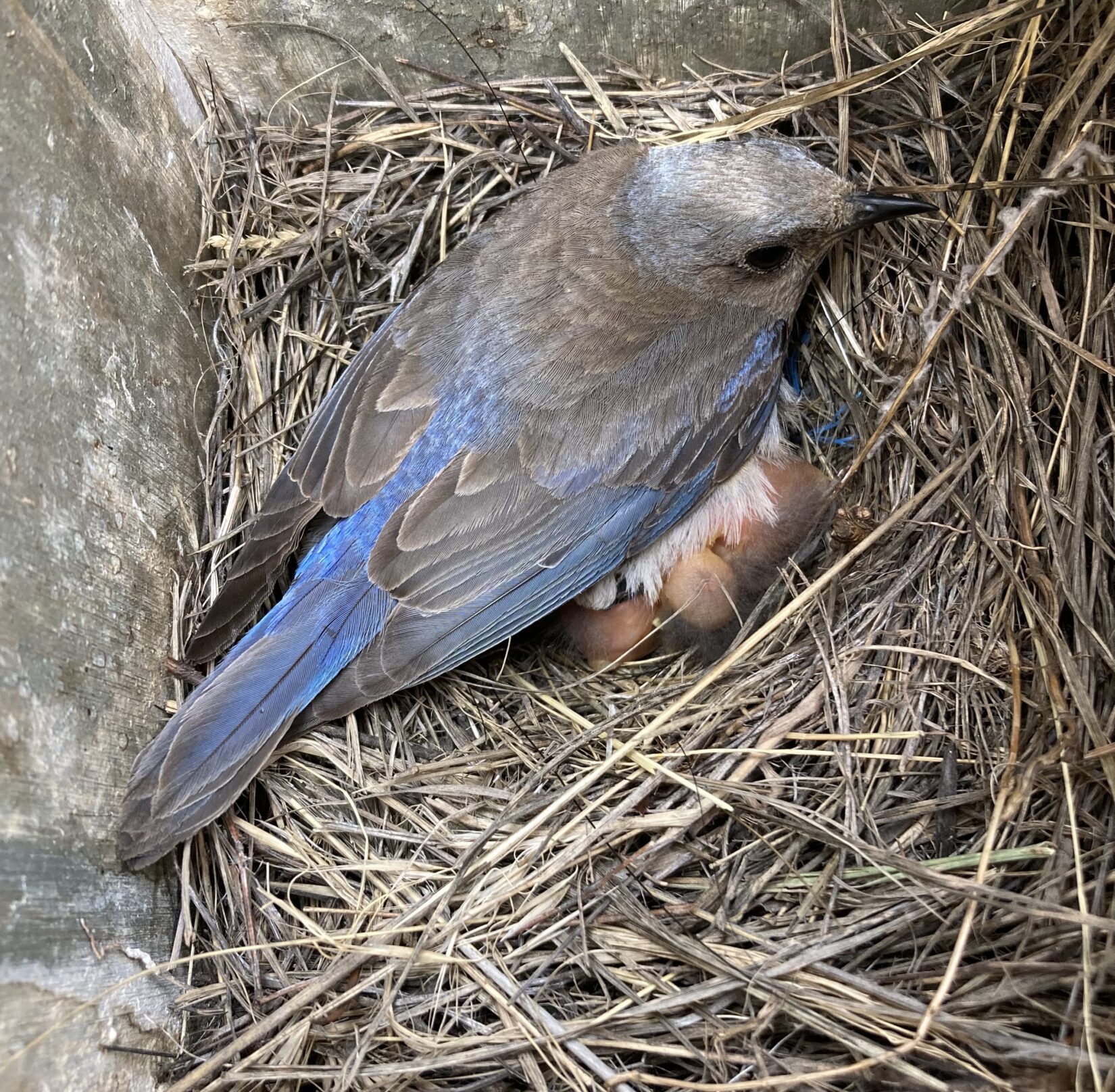Heading outdoors to tidy up in the coming weeks? Now that baby season has started, birds and mammals could be stealthily nesting and denning around your home as we speak! Helping wildlife is easy as reading our handy tips for keeping wildlife safe as you ready your yards and gardens for spring.
Trimming trees
When trimming trees and hedges, take care not to disturb any bird nests that could be hidden among the branches. It takes a sharp eye to spot these nests sometimes — hummingbird nests, for instance, can be as tiny as a toonie with jelly-bean sized eggs inside!
If possible, try to trim trees before April, or wait until after August to avoid peak nesting and breeding seasons.
If you accidentally cut down a branch with a nest, contact your local wildlife rehabilitator or call the BC SPCA Animal Helpline for advice at 1-855-622-7722. The solution could be as simple as re-attaching the branch, but depending on the situation, the whole nest of babies may need to go to a wildlife rehabilitator.

Mowing lawns
Before mowing tall grass for the first time this season, take a walk around your property. Areas that have been undisturbed up until this point are prime nesting spots for shy cottontail rabbits.
Cottontails make a shallow depression in the ground where they give birth to their babies, and they rely on grass cover to keep the nest hidden from predators. That first round with the lawnmower can remove this protective shield and even injure the young rabbits.

Repairing holes
When planning small home repairs as part of your spring cleaning, be on the lookout for signs of wildlife. Damage to roof shingles, vents that are stuffed with grass, have come loose or fallen off, or holes in house siding can all indicate that animals like raccoons or squirrels were looking for (and finding!) a safe, cozy place to den.
Before spring babies are in full swing, take time to identify any holes or areas where animals might den. Seal these holes off early to prevent families from moving in.

Before making any repairs, check that there are no young animals inside. If you see an adult animal frantically trying to enter a recently repaired area, that’s a good sign a mother is trying to reach her babies! Remove the repairs immediately and allow the anxious mother to relocate her babies before resuming your work.
If you need to safely remove wild animals that have moved in, call an AnimalKind company to make sure you’re using the most animal-friendly methods. AnimalKind companies know how to keep the whole family together, and how to wildlife-proof your home to prevent future problems.
Clearing brush
Be careful when clearing brush piles and picking up any windfall that has accumulated over the winter. These can shelter songbirds as they dart back and forth from feeders and gardens. They can also be good camouflage for a nest, and provide safe travel corridors for rarely-spotted mammals like mink and shrews.

Want to attract wildlife to your home? Apart from the sheer enjoyment of nature, there are plenty of benefits to encouraging birds and mammals to visit your yard or garden. Find out how to create wildlife-friendly spaces.
Cleaning out a nest box
If you have any nest boxes or birdhouses, they should be cleaned out at least once a year. Clean out your nest boxes in late fall, or early spring before the breeding season starts. Most birds don’t reuse their old nests, even if they look clean. New nesters will often pull out the old material, but you can lend them a helping hand (or wing).
If you can, taking the nest box down will make it easier to clean. We recommend rubber gloves to protect your hands. To clean out your nest box:
- Remove old nesting material, put it in the compost or use in your garden
- Scrub the inside of the nest box with a brush, mild detergent and water – a hose can help!
- Scrub the nest box again with a 10% bleach solution
- Rinse with hot water and let air-dry completely
Once your nest box is clean, it’s ready to go back out while you look forward to the return of spring birds!

Care for wildlife in need
Wild babies often get displaced from their parents at this time of year. You can be there to help!
